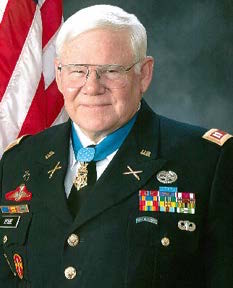Gary M. Rose
Description
Captain Gary M. Rose was commissioned a Field Artillery Officer upon graduation from Officer Candidate School in December 1973. His first duty assignment was as Assistant Executive Officer/Fire Direction Officer, B Battery, 4th Battalion, 4th Field Artillery, Fort Sill, Oklahoma.
His subsequent duty assignments include: Executive Officer, D Battery, 3rd Training Battalion, Fort Sill, Oklahoma; Commanding Officer, D Battery, 3rd Training Battalion, Fort Sill, Oklahoma; Testing Officer, Army Testing and Evaluation Command, White Sands Missile Range, New Mexico; Battalion Fire Direction Officer, 1st Battalion, 76th Field Artillery, Germany; Battalion Fire Direction Officer, 2nd Battalion, 39th Field Artillery, Germany; Commanding Officer, B Battery, 29th Field Artillery, 3rd Infantry Division, Germany; Assistant S3, 72nd Field Artillery Brigade, Germany; and the New Equipment Training Team, Army Test and Evaluation Command, Fort Sill, Oklahoma.
His military education consists of: Field Artillery Officer Basic Course, Field Artillery Officer Advanced Course, Advanced Infantry Training Course, Special Forces Medical Training, Non-Commissioned Officer Academy, Tactical Fire Direction (TACFIRE) System Training, and the TACFIRE Artillery Intelligence Course.
His military awards include the Medal of Honor, Bronze Star with Oak Leaf Cluster and V Device, Purple Heart with two Oak Leaf Clusters, Meritorious Service Medal, Air Medal, Army Commendation Medal, Good Conduct Medal with two Knots, National Defense Service Medal, Vietnam Service Medal with two Campaign Stars, Republic of Vietnam Campaign Medal with 1960 Device, Presidential Unit Citation, Republic of Vietnam Cross of Gallantry with Palm Unit Citation, Republic of Vietnam Civil Actions Medal with Palm Unit Citation, Parachutist Badge, Special Forces Tab, and the Combat Medical Badge.
Captain Rose was awarded the Medal of Honor while serving as a Special Forces Medic in the Vietnam War. His company was continuously engaged by a well-armed army for a period of 4 days. During his period, he continuously exposed himself to intense fire as he fearlessly moved from casualty to casualty, administering life-saving aid. Ignoring his wounds, he continued to render aid to the other injured soldiers. As helicopters came to extract the wounded, he again risked his life to carry wounded personnel to be evacuated. He returned to help repel the enemy until the final extraction helicopter arrived. The helicopter that he was on had crashed, further injuring him. Despite his wounds, he continued to administer aid until another helicopter arrived. His extraordinary heroism saved many lives during that four-day span.

